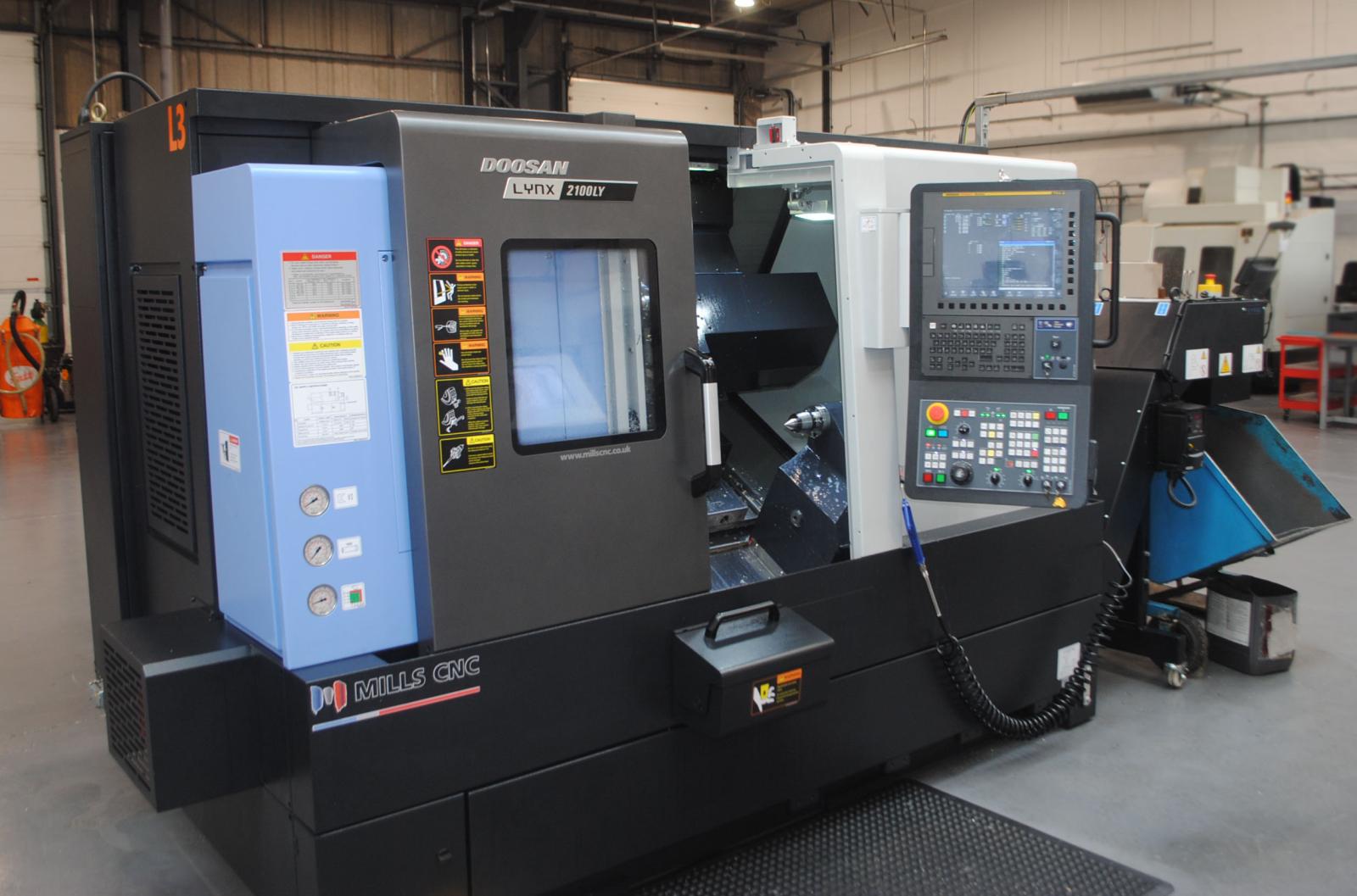
Goodman Precision Engineering Ltd, a motorsport subcontracting specialist, has invested in a new multi-tasking machine to boost its turning capabilities.
The machine, a compact 6” chuck Lynx 2100LY lathe with a servo-driven turret, driven tooling and integrated Y-axis has so far been used to machine complex, high precision parts, primarily for a range of motorsport customers that includes many F1 Teams and Tier One suppliers.
It has also produced components for automotive customers involved, for example, in re-imagining ‘Classic Cars’ for the electric era.
The Lynx 2100LY is the first Doosan machine to be acquired by the company and is part of Goodman’s decision to significantly grow and strengthen its in-house turning capacity and capabilities.
Since being established Goodman Precision Engineering (GPE) has grown and strengthened its position in the motorsport supply chain and developed close, long-term relationships with many motorsport companies.
The company is known for machining high accuracy parts – from powertrain and manifold components to parts for cylinder heads and air jacks – with a high quality finish.
“Machining components to exacting tolerances and superior surface finishes to Ra. 0.4µm from solid or castings is our forte,” says GPE Director, Stephen Reynolds.
Says Stephen Reynolds: “We are milling-led company and regularly invest in advanced 3- and 5-axis machining centres to increase our productivity, improve our performance and win new business in the ultra-competitive motorsport sector.
“Whilst milling still remains the company’s primary focus, we recently made the strategic decision to augment our machining capabilities to include turning, and to provide this as an in-house specialism to existing and new customers.”
In essence this has seen GPE, in recent years, invest in new advanced ‘turning’ technologies. The acquisition of the Lynx 2100LY is the latest evidence of the strategy in action.
Back in 2019, the company made the decision, partly to offset the seasonal ‘feast or famine’ dynamic of working in F1, to expand the scope and scale of its machining operations and services by creating an in-house turning resource.
Up until that point GPE was focused, almost exclusively, on providing high-quality milling services to its motorsport customers, and supplementing them with a range of secondary finishing services, such as anodising, coating, painting, and so on, subcontracted-out to its preferred suppliers.
Says Stephen Reynolds: “We knew, from experience and via our contacts, that significant organic growth and new business opportunities existed in the motorsport sector if we could offer both existing and new customers a high-quality turning service.”
This focus on growth resulted in GPE acquiring its first lathe in 2019 as well as recruiting an experienced turner to operate it. Things were progressing as planned - then Covid-19 happened and accelerated the plan.
Explains Stephen Reynolds: “The pandemic caused significant disruption to motorsport across the world with events and competitions being cancelled and postponed throughout 2020…and during 2021 for that matter.
“The turmoil created by the pandemic, within our core markets and throughout our customer base, was a real watershed for us and resulted in us forensically re-evaluating the business and making strategic decisions about the company’s future direction.”
It was against this backdrop of uncertainty that GPE determined that its previous decision to invest and strengthen its recently introduced in-house turning resource would be given extra impetus. The aim was to secure even more work for machining high-precision turned parts from existing, and new, motorsport customers, and lessen the overall dependence on the motorsport sector by reaching out to other sectors and industries.
Continues Stephen Reynolds: “In short, we decided, from both a survival and growth perspective, to provide existing customers with new services, as well as diversifying into completely new markets.”
The investment focus was on compact machines and multi-tasking machines.
Says Stephen Reynolds: “Multi-axis and multi-tasking lathes with, for example, Y-axes and driven tools help us machine complex, high-precision parts in one-hit and make us more efficient.
“Multi-tasking machines help us with production scheduling, always an issue with motorsport customers who often expect part alterations and iterations to be machined and delivered in next to no time.”